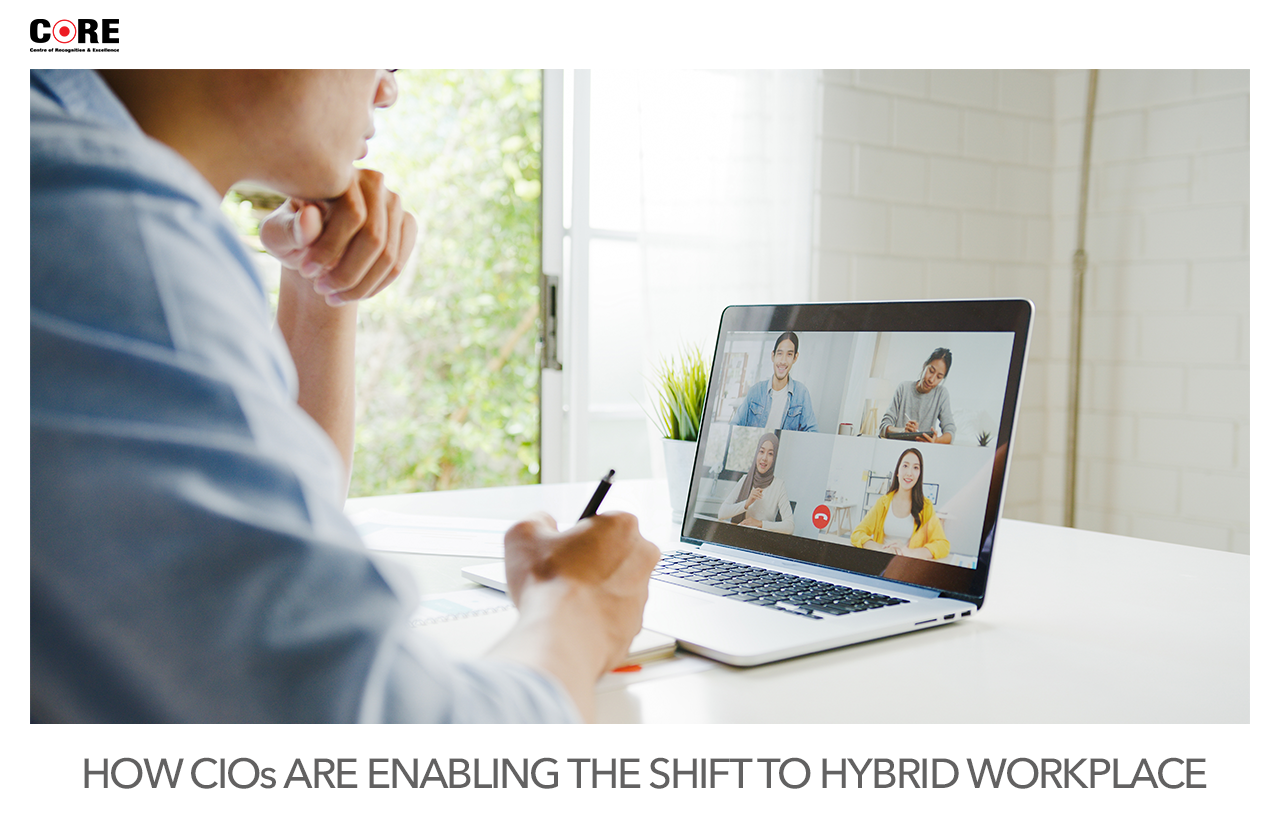A hybrid work model calls for stabilizing critical infrastructure, systems, and processes - which are key to business continuity and agility for any enterprise
In the new normal, organization globally are now planning to return at least some portion of the workforce to the office by gearing up to a hybrid work model.
The hybrid environment envisions a completely new approach to workforce management, processes, facilities, and connectivity. To enable a smooth transition to the new normal of hybrid work model, CIOs are tasked with helping the organisation in carving out a successful working model with supporting technology infrastructure to keep the workplace safe and employees connected securely.
Sajith Chakkingal, who heads technology for a services firm, believes that the future work is going to be Hybrid. “There is no way that we are going back to the monopoly of everybody getting into the office. Hybrid is not working from home it is working from anywhere versus coming to the office. That’s going to be the DNA going forward for almost all the companies from which they could operate from. It’s interesting to see this big shift, and how it’s happening though some of it had happened unwillingly during COVID,” he adds.
Organisations, which were hitherto skeptical about allowing their employees to work from home, have found an opportunity created by the pandemic in estimating the productivity of the employee even in a remote working scenario. They are offering flexibility to their employees to choose how and where they wish to work. And there is no denying that this is sure to impact both technology and talent in these challenging times.
Khushru M. Mistry, CIO of a leading brand, concurs that it's going to be a hybrid work culture, going forward. "In my opinion, as long as the vaccination comes in completely, and a major part of the population takes the vaccine, the hybrid work is going to continue. Hybrid is already a reality. We don't expect people to come back to work even after we open the offices,” he says.
Building the infrastructure for hybrid future
A hybrid work model calls for stabilizing critical infrastructure, systems, and processes - which are key to business continuity and agility for any enterprise - along with offering robust tech support and security of core technologies.
Realigning work processes and creating new operational efficiencies has marked the beginning of 2021. In addition to coming up with a new digital roadmap, CIOs are playing an active role in supporting the HR department with working out new work schedules for their employees, whether working remotely or at the office. As an industry expert puts it, "In the present scenario, the job of a CIO is far less about technology and far more about people."
The hands of IT leaders are full in enabling flexible work environments, real-time communications to facilitate uninterrupted meetings for both physical and virtual attendees, deploying VPN and office productivity tools, etc.
Thus, the responsibility of a CIO in the post-COVID world has increased multi-fold – from driving digital strategy to ensuring business continuity and provide technology and tools that can support hybrid work models to enable a seamless work culture and customer satisfaction.
When we look at the opportunities on hand for the CIOs, it is more to do with remote enablement, a SAAS-based offering, or an easy way to host things that are nearer to the users or customers. And, there is going to be a lot of shift in the workplace software; the enterprise mobility strategy is going to change for the companies, their BYOD strategies are going to change and of course without saying the strategy towards security also needs to be looked at.
Mistry, for example, is making significant investments towards security, to ensure that work enviroments at employees’ homes are secured, while enabling secure access to remote employees. He is also enabling a ‘choose your own device’ model in addition to BYOD at his organization.
“There are a lot of opportunities where the digital handshaking is going to come between an employee and an employer; a customer and a provider, etc. More or less, it’s a new way of looking at things. Of course, the pandemic has taught us a lot of great lessons, and I feel that opportunities for CIOs are multiple,” add Chakkingal.
As IT heads, they are also tasked with the responsibility of driving consistent data security and governance while setting and enforcing proper policies as well for a hybrid work model.
While making the transition to a hybrid work model, enterprises are investing in contact-tracing, thermal scanners, sensors, and other safety tools to enable safe and smooth functioning inside the premises.
According to Mistry, technology has now proven beyond a reasonable doubt that even traditional office-centric tasks –call center operation for example—can be performed remotely, making it a long-term sustainable model.


